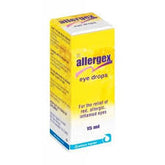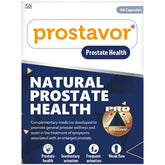Infected piercings
An infected piercing occurs when microorganisms, such as bacteria or fungi, enter the pierced area, leading to inflammation, pain, redness, and discharge. Infected piercings can occur in any part of the body where piercing has been performed, including the ears, nose, eyebrows, lips, tongue, belly button, nipples, or genitalia. Prompt recognition and treatment of an infected piercing are essential to prevent complications and promote healing.
Causes
Infected piercings can result from various factors, including:
-
Poor Hygiene: Failure to clean the piercing site regularly or adequately can lead to the accumulation of dirt, sweat, or debris, creating an ideal environment for bacterial growth.
-
Contaminated Equipment: The use of unsterilized or improperly sterilized piercing needles, jewelry, or instruments can introduce harmful microorganisms into the skin, increasing the risk of infection.
-
Trauma or Injury: Rough handling of the piercing site, excessive manipulation, or accidental trauma can disrupt the healing process and increase susceptibility to infection.
-
Foreign Bodies: Entrapment of foreign bodies, such as hair, fabric fibers, or cosmetic products, in the piercing site can serve as a nidus for bacterial colonization and infection.
Symptoms
The symptoms of an infected piercing may vary depending on the severity and extent of the infection but commonly include:
-
Pain or Discomfort: Localized pain, tenderness, or soreness at the piercing site, especially with movement or pressure.
-
Redness and Swelling: Increased redness, warmth, or swelling around the piercing, indicating inflammation and tissue reaction.
-
Discharge: Formation of pus, yellow or greenish fluid, or blood-tinged discharge from the piercing site, often accompanied by foul odor.
-
Heat or Fever: Systemic symptoms such as fever, chills, or malaise may occur in more severe cases of infection, indicating systemic inflammation or spread of infection.
Treatment
Treatment for an infected piercing typically involves:
-
Cleaning and Disinfection:
- Gently clean the infected piercing site with saline solution or mild soap and water to remove crusts, discharge, or debris. Avoid harsh antiseptics or alcohol-based solutions, as they can irritate the skin and delay healing.
-
Warm Compresses:
- Apply warm compresses or soak the affected area in warm saline solution to help reduce inflammation, alleviate pain, and promote drainage of pus or discharge.
-
Topical Antibiotics:
- Apply over-the-counter antibiotic ointments or creams, such as bacitracin or mupirocin, to the infected piercing site to help prevent secondary bacterial growth and promote healing. Avoid using excessive amounts or prolonged use of topical antibiotics, as this may lead to antibiotic resistance or allergic reactions.
-
Oral Antibiotics:
- In cases of severe or systemic infection, oral antibiotics may be prescribed by a healthcare provider to target the underlying bacterial or fungal pathogens and prevent complications. Follow the prescribed dosage and duration of antibiotic treatment as directed.
-
Jewelry Removal:
- In some cases, temporarily removing the jewelry from the infected piercing may help improve drainage, facilitate cleaning, and promote healing. Avoid reinserting the jewelry until the infection has resolved completely to prevent recurrence.
-
Avoidance of Irritants:
- Avoid using harsh chemicals, cosmetics, or topical products on or around the infected piercing site, as they can exacerbate irritation, delay healing, or increase the risk of secondary infection.
Prevention
To reduce the risk of developing an infected piercing, it is important to:
- Choose a reputable and experienced piercer who follows strict hygiene and sterilization protocols.
- Clean the piercing site regularly with saline solution or mild soap and water as recommended.
- Avoid touching or manipulating the piercing excessively, especially with unwashed hands.
- Avoid swimming in pools, hot tubs, or natural bodies of water until the piercing has fully healed to prevent contamination.
- Follow aftercare instructions provided by the piercer or healthcare provider and attend follow-up appointments as scheduled.
Seeking Medical Attention
If symptoms of an infected piercing persist or worsen despite home care measures, or if signs of systemic infection (e.g., fever, spreading redness) develop, it is important to seek prompt medical attention from a healthcare provider. In some cases, drainage of abscesses or surgical intervention may be necessary to treat severe or recurrent infections and prevent complications.
Conclusion
Infected piercings can cause discomfort, pain, and complications if left untreated. Prompt recognition and appropriate treatment are essential to promote healing, prevent complications, and ensure optimal outcomes. By practicing good hygiene, following aftercare instructions, and seeking timely medical attention when needed, individuals can reduce the risk of infection and enjoy the aesthetic and cultural benefits of body piercing safely.
- Complication of Infected piercings
- Diagnosis of Infected piercings
- How is Infected piercings treated?
- Infected piercings
- Infected piercings myths
- Medicine for Infected piercings
- Remedies for Infected piercings
- Support for Infected piercings
- Symptoms associated with Infected piercings
- The best British Online Pharmacy
- Top 10 UK Pharmacies
- Treatment for Infected piercings
- What causes Infected piercings
- What is Infected piercings
- Where can I buy medicine for Infected piercings in the UK
- ZimSeller Pharmacy



















